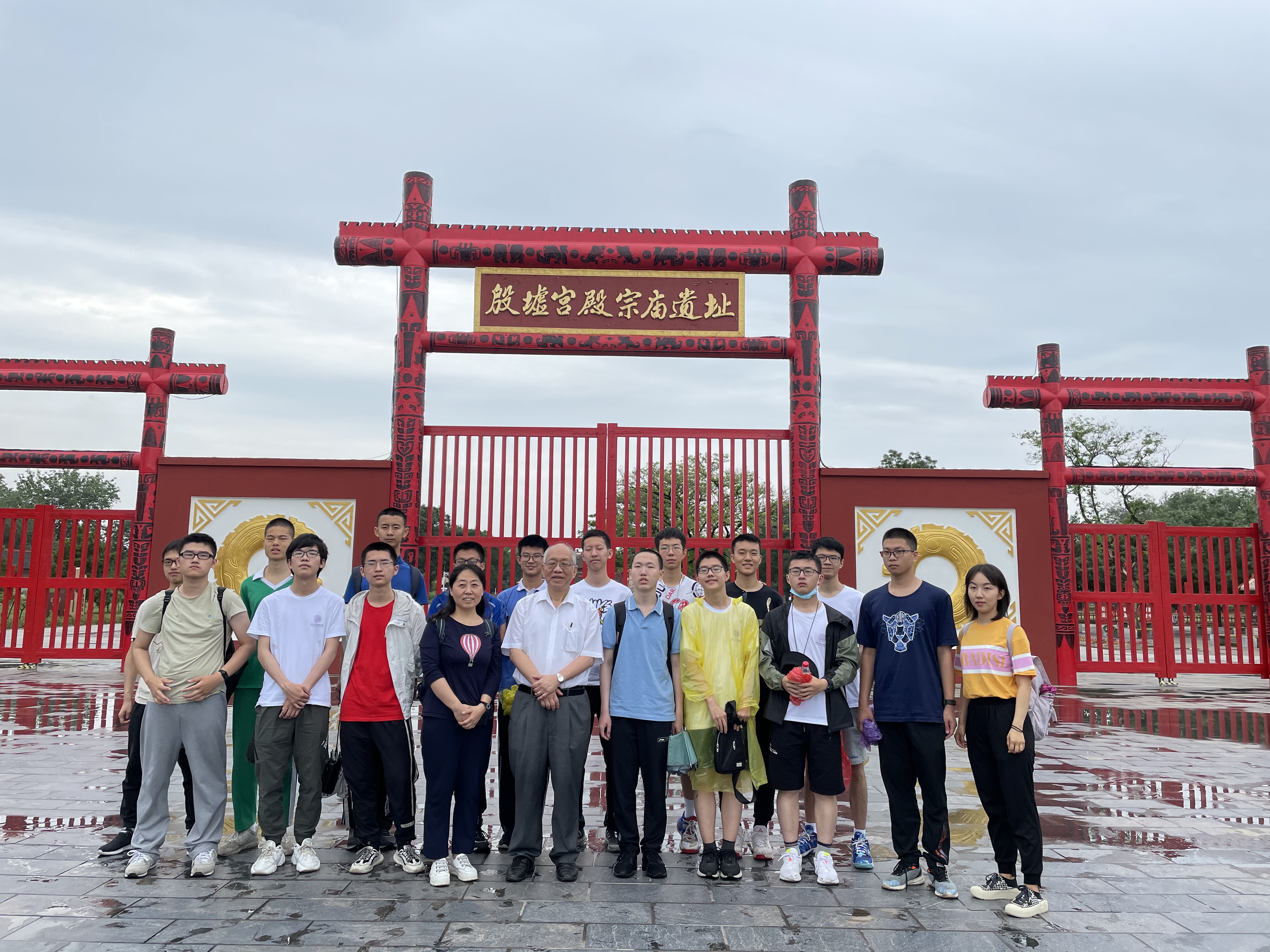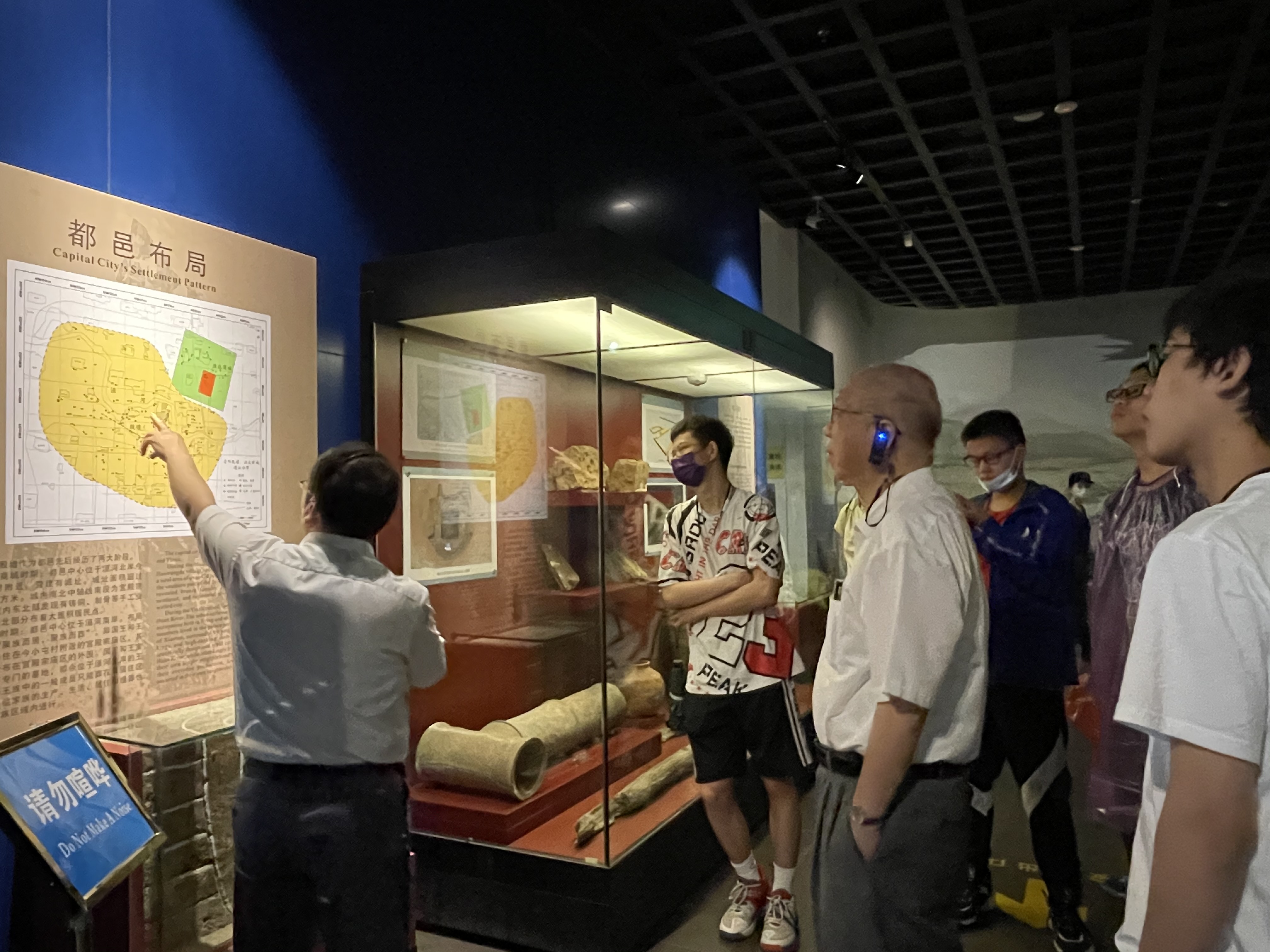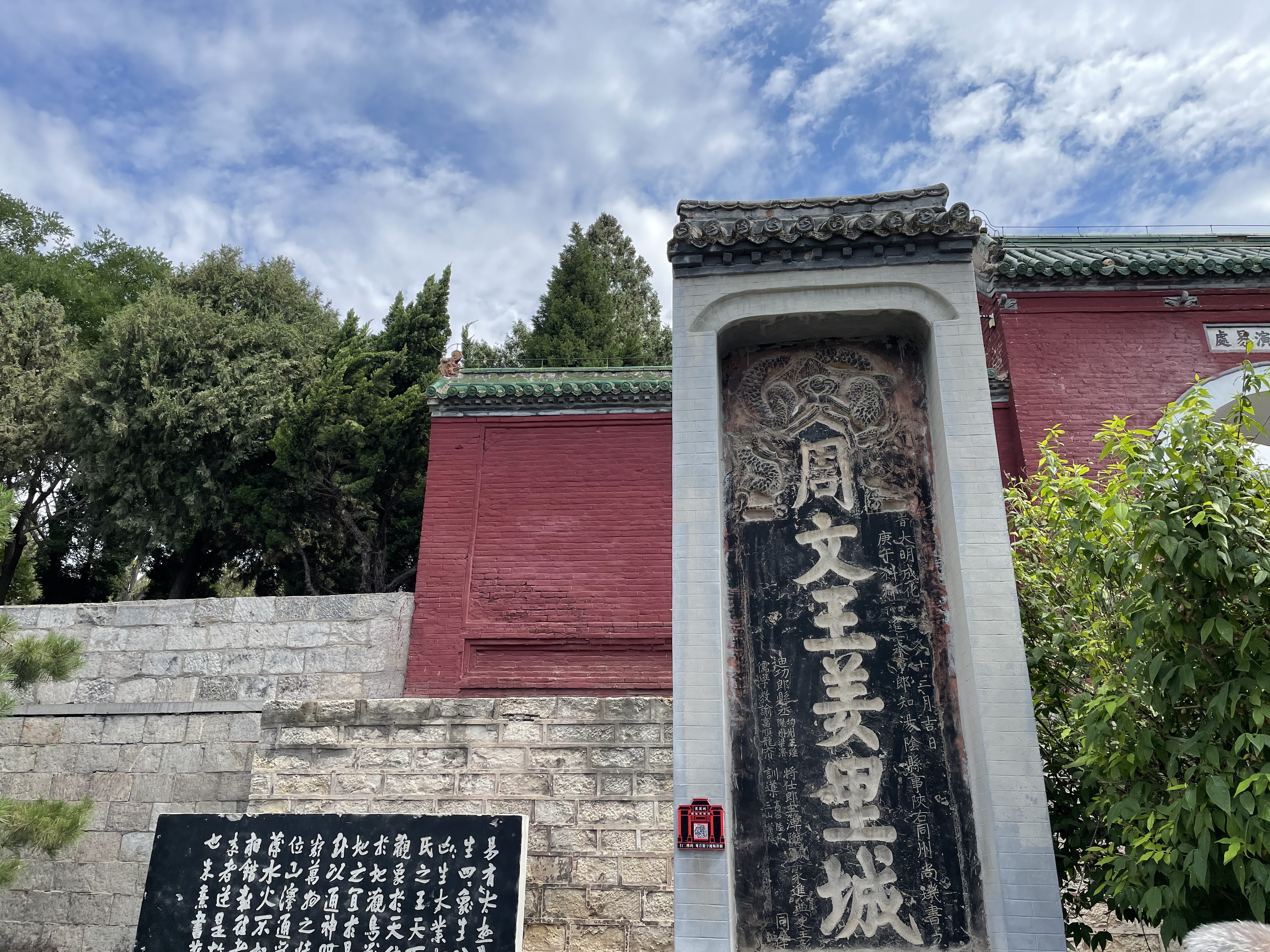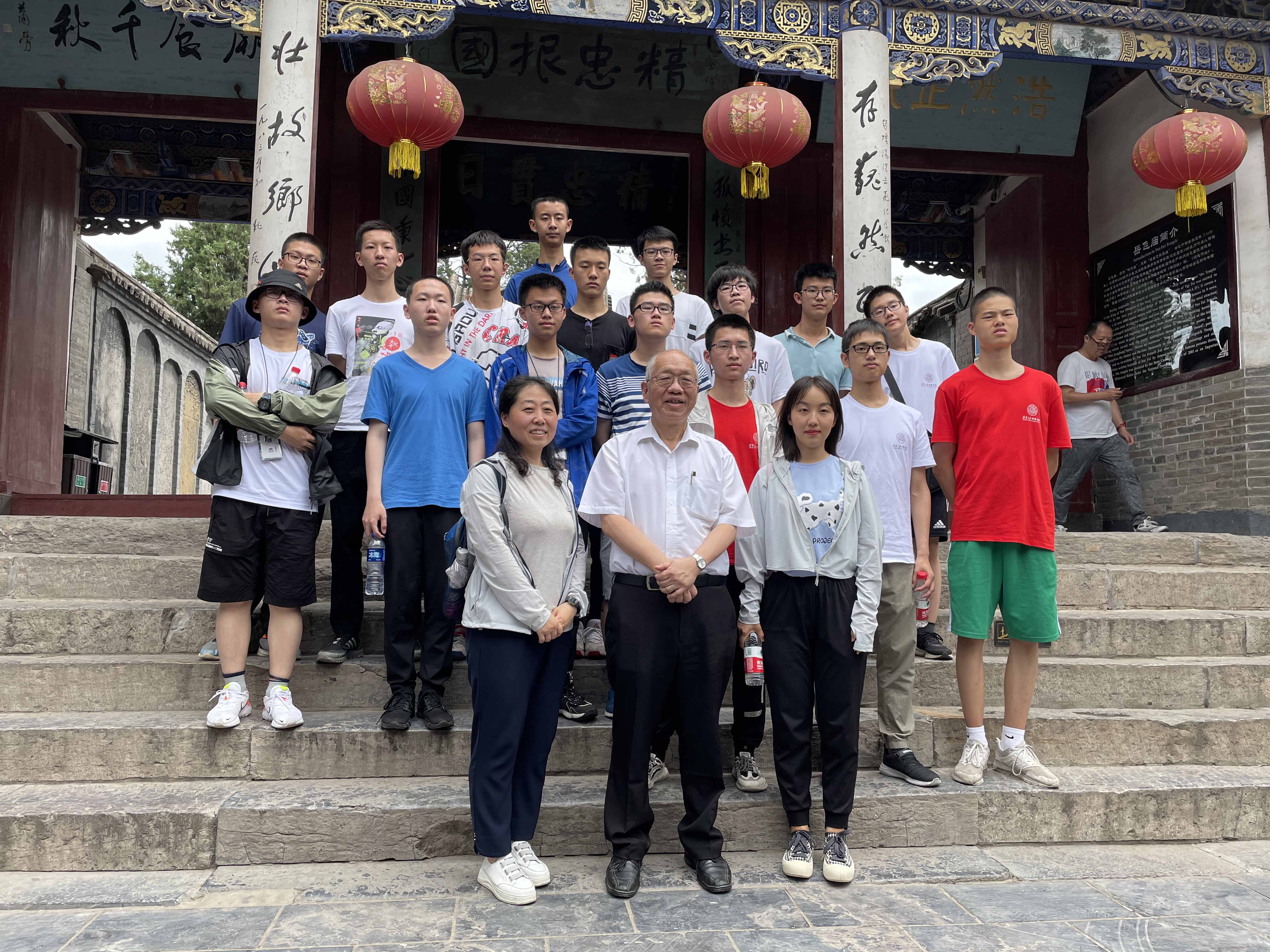As a mathematician with extensive knowledge of the past and present, Mr. Shing-Tung Yau, Dean of Qiuzhen College, has placed special emphasis on the cultivation of humanistic qualities in leading math talents.
In order for students to truly experience the profound essence of Chinese history, appreciate the unique charm of the 5,000-year civilization, and enhance their national confidence and identification, Mr. Yau himself led a team of students from the first pre-college class to Anyang, Henan Province, to explore their roots in Chinese culture and experience authentic history.
“Qiuzhen College Chinese History Study Tour”, whose establishment was facilitated by Mr. Yau himself, is definitely exclusive to Qiuzhen College.
DAY 1
Beijing West→Anyang East
Exploring the origins of Chinese characters at National Museum of Chinese Writing
On the first day, Mr. Yau, together with his students, arrived in Anyang by high-speed train at noon.

As one of the eight ancient capitals of China, Anyang is not only the hometown of oracle bone script, the birthplace of I Ching, and the cradle of the Red Flag Canal spirit, but also a city of great historical and cultural significance. Throughout history, the Shang Dynasty, the Cao Wei Dynasty, the Later Zhao Dynasty, the Ran Wei Dynasty, the Former Yan Dynasty, the Eastern Wei Dynasty and the Northern Qi Dynasty have all built their capitals in Anyang, earning it the nickname “the ancient capital of the seven dynasties”.
Guo Moruo, a Chinese historian, once wrote the famous poem in Anyang: “The reputation of Huanshui Anyang is not vain, it was the capital of the empire three thousand years ago; the culture of the Central Plains was founded in Yin Dynasty, visiting here is more worthwhile than reading ancient books”.
This is precisely why Mr. Yau chooses Anyang as the first stop for the Chinese History Study Tour, as he hopes that the students would be able to explore the history of China and trace their roots of Chinese culture in the context of historical development.
01 First stop of this tour
National Museum of Chinese Writing
Chinese characters have played an important role in the development of Chinese history and culture.
National Museum of Chinese Writing, the only national museum in China that features writing, is also the first stop of this study tour.

The discovery of the oracle bone script at the Yin Ruins 120 years ago has documented and preserved the history of the late Yin Shang Dynasty spanning over 200 years and is a precious sample of the language and writing of the Yin Shang Era.
According to the guide, the oracle bone scripts are carved on turtle shells or animal bones by the Shang people 3000 years ago, and are the earliest and most systematic mature script among the ancient scripts found in China.
Seeing the oracle bones and other writing-related collections displayed in the showcase, the students at Qiuzhen College are filled with emotion, “It is truly a great source of pride to see that among the four ancient nations in the world, the ancient scripts of the other three have all perished, and only Chinese characters have survived until now.”
Mr. Yau also said, “The structure of Chinese characters has not changed in over 3,000 years and this heritage is the essence of Chinese genes.”

The students took a group photo in front of the mural engraved with the Six Arts of the Spring and Autumn Period: rituals, music, archery, chariot racing, calligraphy, and mathematics”. They discovered that the word “mathematics” here echoed the word “Chou Xue” in the Mission of Qiuzhen College, which reminded them of Mr. Yau’s ardent hope for students that “with three years of study and five years of scientific research, they will be in a position to lead the way and expand the field of science, and live up to the high expectations of the world.”

A fun game in the Museum managed to attract the attention of several students, who gathered in front of the screen, trying to answer the questions and win the game.
“It seems that the literary texts and ancient poems we memorized in secondary school are still useful.” The students who took part in the game spoke.

After the visit, Mr. Junhui Yang from the National Museum of Chinese Writing gave a presentation entitled “Learning Chinese Characters Starts with the Oracle Bone Script”.
Starting from the origins of the oracle bone script, Mr. Yang stressed that it contains the essence of Chinese genes and is worth learning and exploring. Mr. Yang explained that oracle bone script is mainly used for divination in ancient times, and gave a vivid interpretation of a piece of the script, which made the students marvel at the wisdom of the ancients as well as the beauty and ingenuity of Chinese characters.
To thank National Museum of Chinese Writing for its warm reception, Mr. Yau signed and bestowed a book after the lecture. Mr. Yang happily said that although he was a Chinese language and writing worker, he had always admired the study of mathematics, and he humorously mentioned that he would encourage the secondary school students he taught to study hard in mathematics, and looked forward to the day when his students would also be admitted to Tsinghua University and join Qiuzhen College.

Throughout history, Chinese characters, with stability and consistency, have enabled the sustainable development of Chinese history and culture.
At National Museum of Chinese Writing, Qiuzhen students not only learnt about the process of excavation, the utility of oracle bone script and its unique character structures but also experienced the beauty of Chinese characters and the longevity of Chinese culture through their transformation.
DAY 2
Searching for the ruins of the ancient capital
Climbing the Tianning Temple Pagoda
Appreciating the Lingquan Buddha Sculpture
02 Second stop of the tour
Yin Ruins
As one of the most famous ‘classical city-states’ in the world’s ancient civilizations, Yin Ruins is the highlight of this study tour.

Yin Ruins refers to the ruins of the capital of the late Shang Dynasty. In 1300 BC, the Shang king Pan Geng relocated his capital to the village of Xiaotun, northwest of present-day Anyang, known as Yin in history, which witnessed the rule of eight dynasties and twelve kings.
On this tour, we were honored to have invited Mr. He Yuling from Anyang Archaeological Team of the Chinese Academy of Social Sciences to lead a tour of the ruins and introduce us to the history of the Shang and Zhou dynasties. As an expert in this period of history, Mr. He’s introduction was detailed and lively. Mr. Yau praised him for his “good presentation” many times, while the students followed Mr. He closely and listened carefully.

Together with the students, Mr. Yau visited the Yin Ruins Museum, the exhibition hall for carriages and horses, the exhibition hall for oracle bone cellars, the tomb of Fuhao, and the Yiqi sacrificial pit, where they admired many precious cultural relics such as oracle bone scripts, bronzes, jades, and gems.
According to Mr. He, Yin Ruins unearthed a typical slave society with three elements (urbanism, writing, and bronze ware), which qualifies as a splendid Chinese civilization.

03 Third stop of the tour
Tianning Temple Pagoda
The Tianning Temple Pagoda in Anyang was built in the second year of Guangshun in Later Zhou Dynasty and has a history of over a thousand years. As a symbol of the local ‘literary style’, it is also known as the ‘Wenfeng Pagoda’.
The pagoda has a unique architectural style and is characterized by a ‘large top and small bottom’.

Driven by curiosity, the students climbed with all their might and soon managed to reach the top of the tower, which has extremely steep steps leading to the top.
The tour guide, who was unable to keep up with the students, looked at the energetic students of Qiuzhen College and exclaimed, “It’s good to be young! These kids are going to be the pillars of our nation in the future.”

04 Fourth stop of the tour
Lingquan Temple, the ‘Mogao Grottoes’ of the Central Plains
The Lingquan Temple in Anyang, built by the Eastern Wei monk Dao Ping, is a northern Buddhist resort.
The treasure of the temple is the “Ten Thousand Buddha Grotto”, with thousands of beautiful Buddha carvings on the mountain walls, stone walls, and caves, most of which were built during the Sui and Tang dynasties, reflecting the prosperity of Buddhism in those times.
The exquisitely shaped Buddha carvings have not only amazed the students, but also Mr. Yau, who could not stop admiring the shapes and carving techniques, as can be seen from the smile on Mr. Yau’s face in the photo below.
05 Fifth stop of the tour
Daily chat with Dean Yau
Halfway through the study tour, our beloved Dean Yau had a lot to say to the students.
Thus the College arranged an informal talk before dinner.
Mr. Yau said he hoped that through this tour, the students would be able to appreciate the depth of Chinese history and culture, build up national confidence, develop patriotism and understand the importance of studying history and exploring its origins. Mr. Yau stressed that as students of Qiuzhen College, they should develop in an all-around way and grow into ‘generalists’.

DAY 3
Visit the ancient city Youli and learn from the national heroes
06 Sixth stop of the tour
Tangyin Museum
Tang Yin, known as Dang Yin in ancient times, is a famous imperial capital with a bright and ancient cultural heritage.
The three saints, saint of letters, King Wen of Zhou, saint of martial arts, Yue Fei, and saint of medicine, Bian Que, all came from here; Baiying Ruins, Youli Ruins, Beicheng Ruins, Yuefei Temple, and many other historic sites are also located here. Many well-known historical stories such as King Wen’s interpretation of I Ching, the relics of Yingfeng, the rescue of Zhao by Lord Xinling, the murder of the genius doctor Bian Que, and Yue Fei’s loyalty to the country also took place here.

07 Seventh stop of the tour
King Wen of Zhou’s City Youli
The motto of Tsinghua University, “Self-discipline and Social Commitment”, is derived from the two lines of I Ching: “As heaven maintains vigor through movement, the gentleman should constantly strive for self-perfection” and “As the earth is amiable, the gentleman should build virtues to bear all things”. Youli city is precisely the birthplace of I Ching culture.

The staff of the city prepared a drama performance, which vividly portrayed the historical allusion to “King Wen’s Chariot”. King Wen pulled the chariot 808 steps, and thus the Zhou Dynasty lasted for 808 years. It reveals an everlasting truth that a sincere heart is always essential, whether you are a king or a student.

08 Eighth stop of the tour
Yue Fei Temple is a temple built to commemorate Yue Fei, the famous national hero of the Southern Song Dynasty.
With the mission of serving our country through their studies, the students from Qiuzhen College have gained a deeper understanding of the meaning of “serving the nation with loyalty” through visiting the Yue Fei Memorial Hall.

